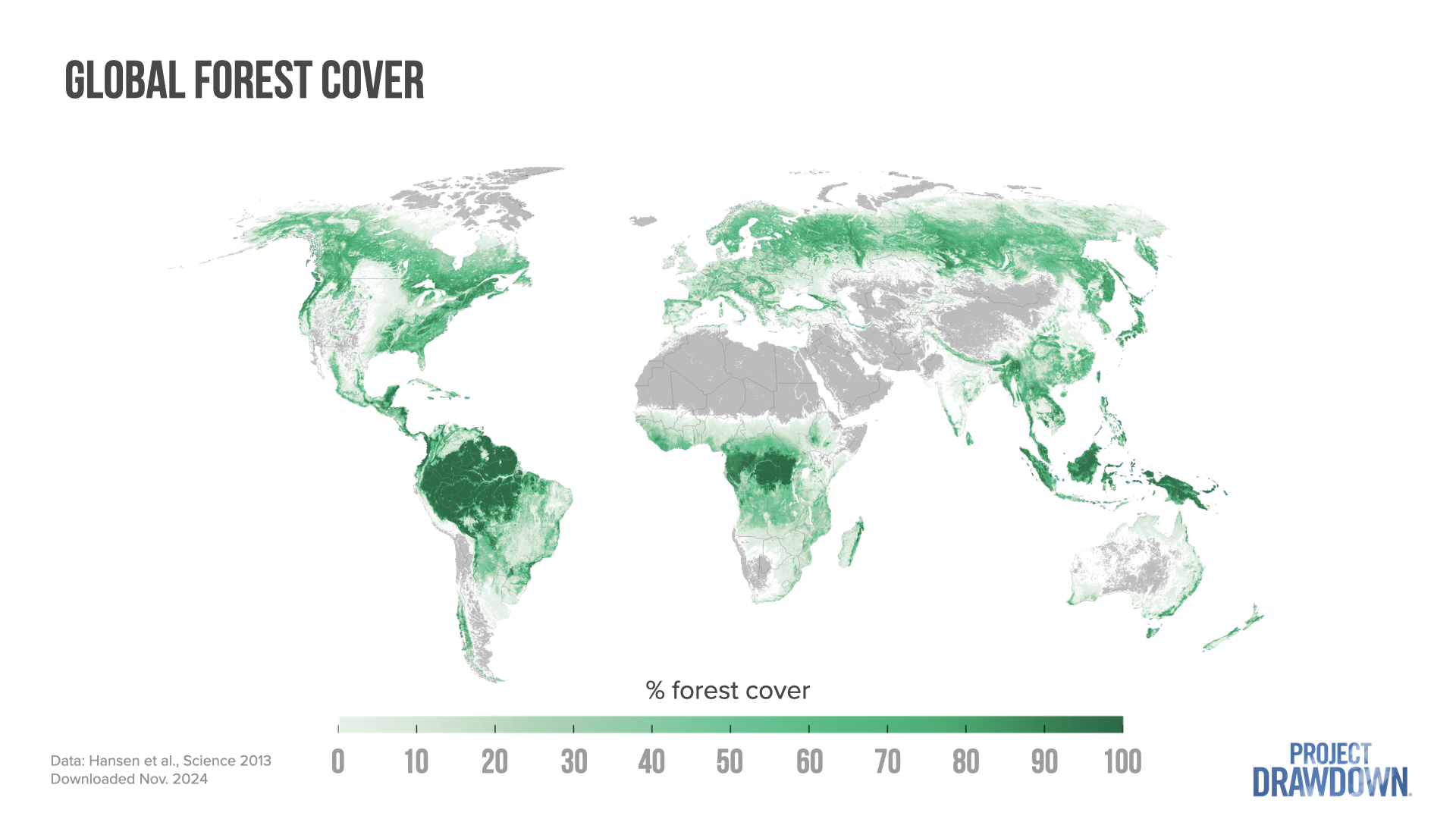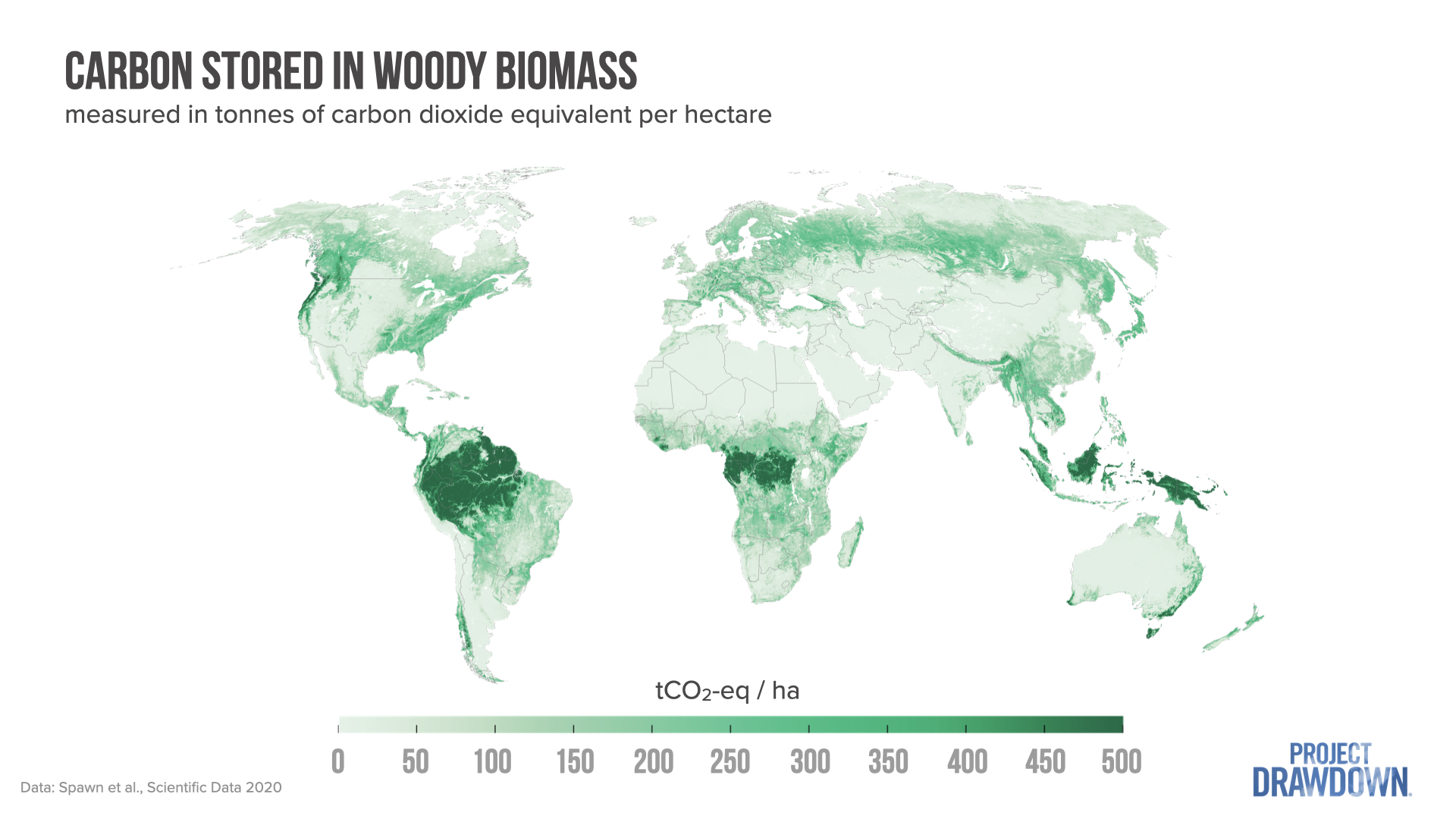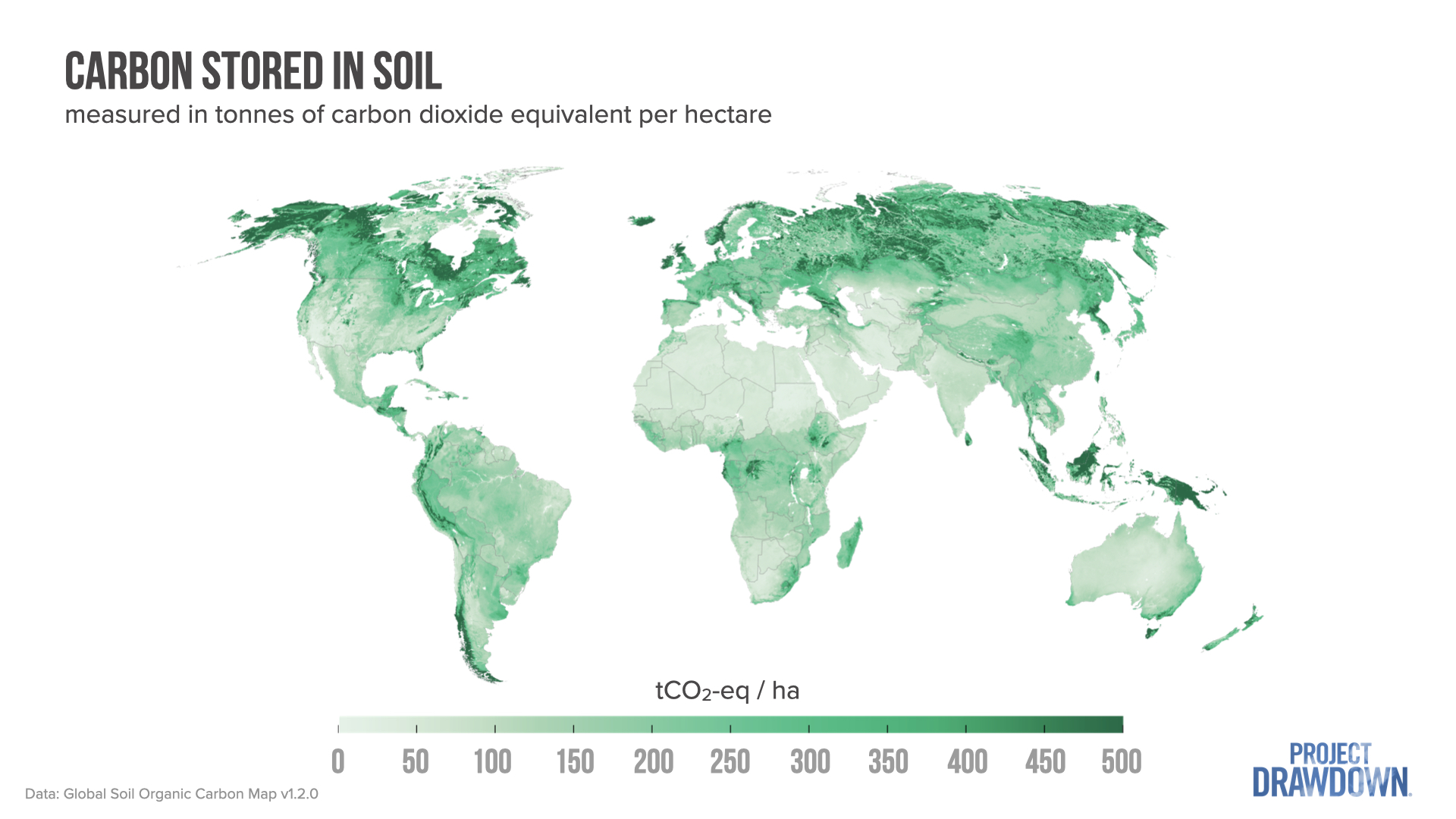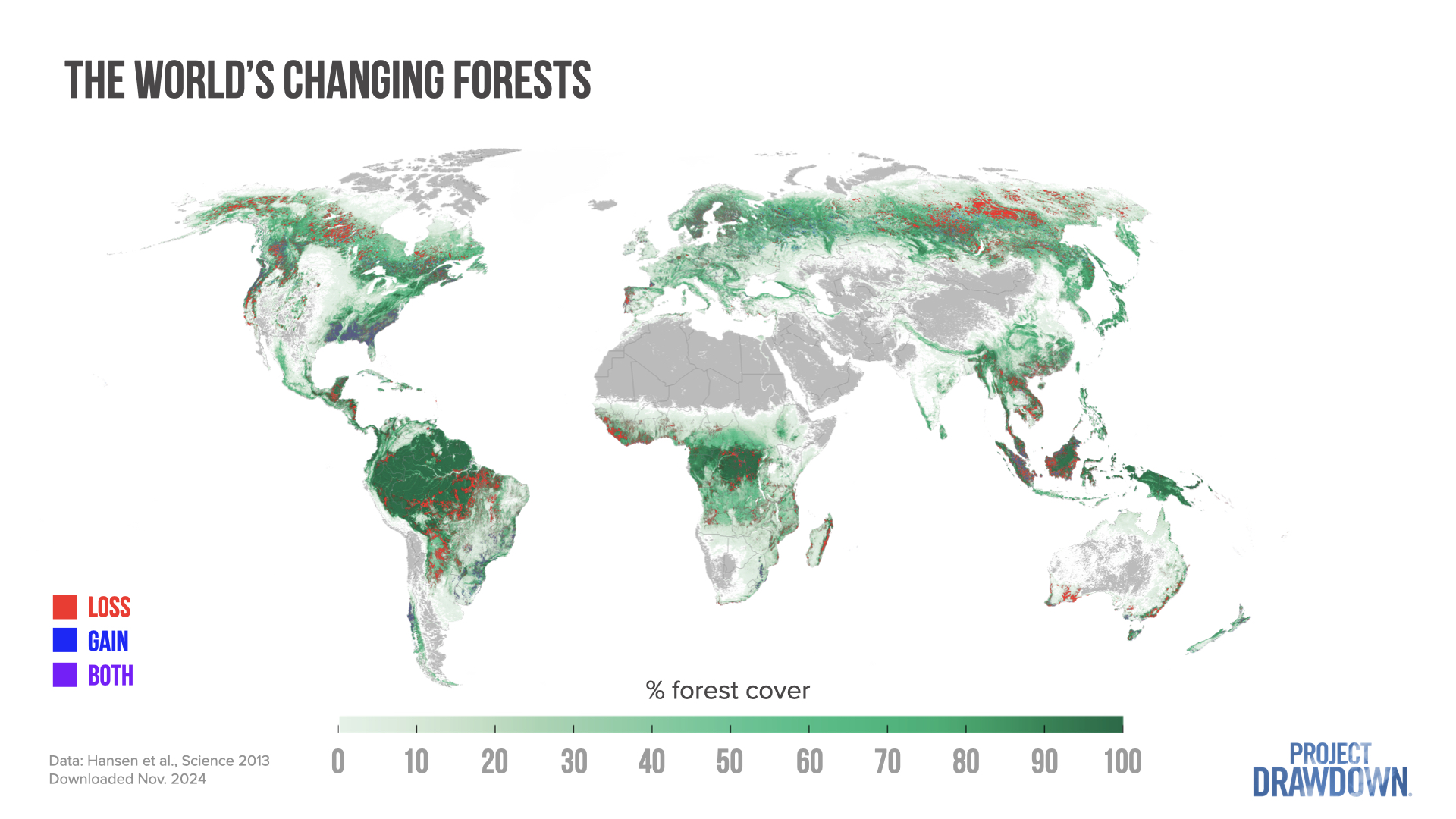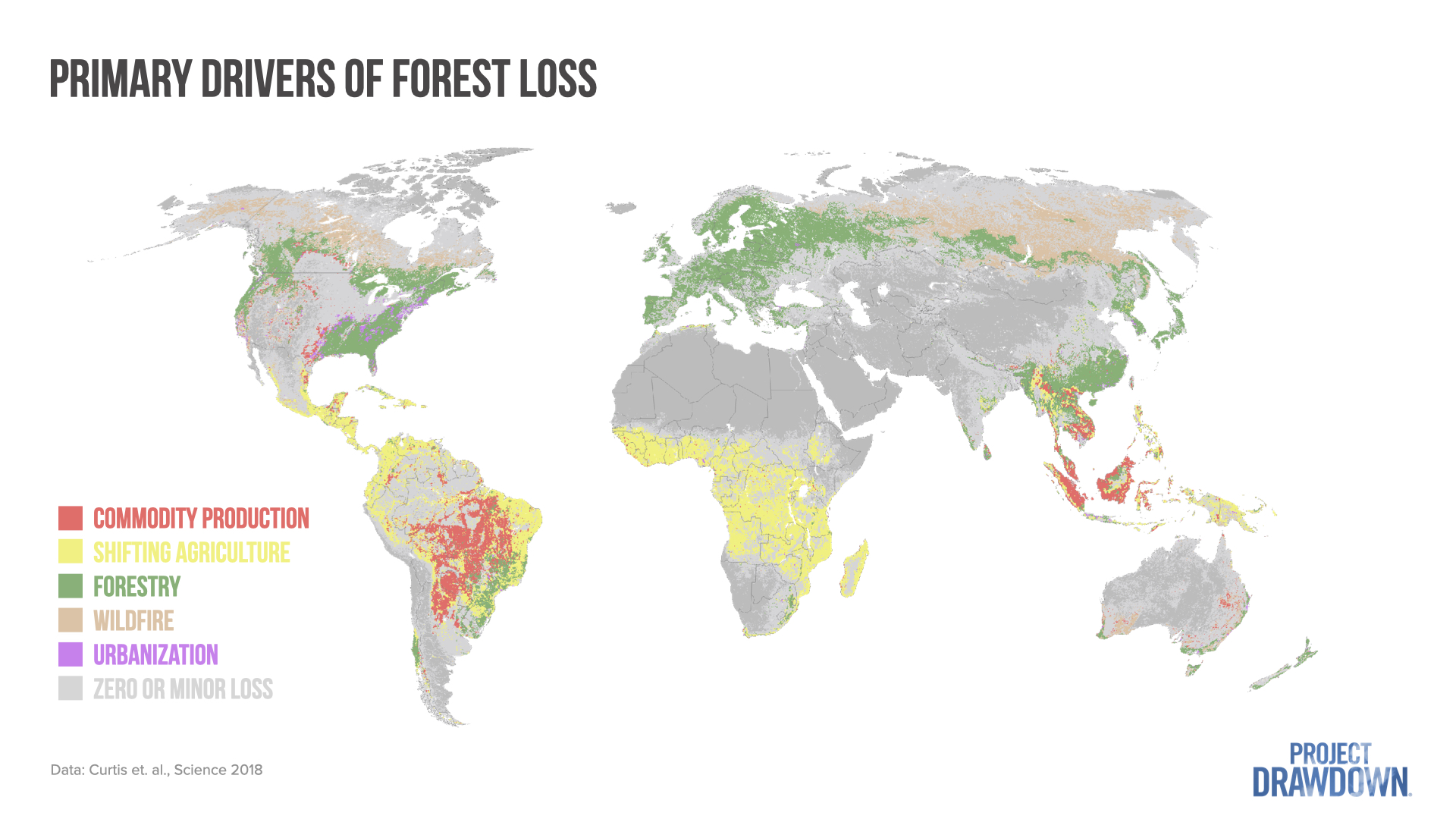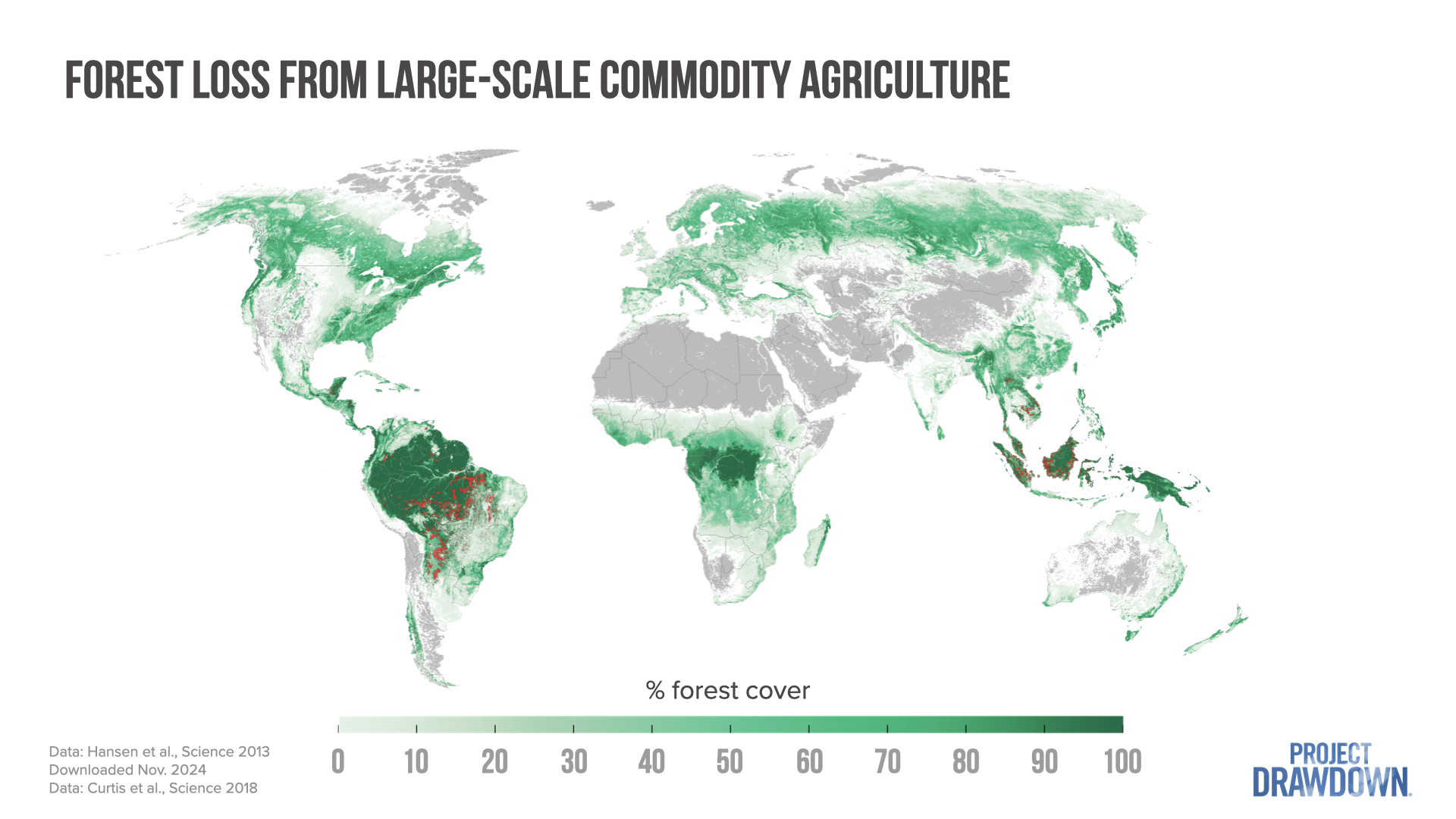Stopping Deforestation is an Emergency Brake Solution
Figure 1. Breakdown of Global Greenhouse Gas Emissions. Deforestation accounts for about 11% of the world’s greenhouse gas emissions. This is a significant driver of climate change, accounting for more emissions than the entire United States economy.
Climate change is more than smokestacks and tailpipes. While the use of polluting fossil fuels is the biggest contributor to climate change, it’s not the only one. Globally, deforestation is responsible for 11% of greenhouse gas emissions – more than the entire United States. Moreover, stopping deforestation is an emergency brake solution, meaning it reduces emissions faster than most other solutions and helps rapidly curb disaster-driving global warming.
“Without taking deforestation prevention more seriously, there is simply no way we will be able to stop climate change,” Project Drawdown Executive Director Jonathan Foley and Senior Scientist James Gerber write in a recent Insights post. “It’s time to pull the emergency brake and provide the effort, attention, and funding that stopping deforestation deserves.”
When people think of climate solutions, they often focus on smokestacks, tailpipes, and other artifacts of our fossil-fueled economy.
That’s fitting since roughly two-thirds of the world’s greenhouse gas emissions come from producing and burning oil, gas, coal, and other highly polluting fuels. But it overlooks other critical emissions sources – including deforestation – that are also accelerating the climate crisis.
Deforestation – clearing forests mainly for agricultural expansion but also for timber, mining, and cities – is a significant source of greenhouse gases. Roughly 11% of the world’s total greenhouse gas emissions come from deforestation. To put this in perspective, the emissions from the entire United States are roughly 10% of the world’s total.
Today, the world’s forests cover about 4 billion hectares or roughly 30% of the Earth’s land surface. But forests are being cleared in many areas – for expanding agricultural land, harvesting timber and other forest products, mining, or urban sprawl.
Naturally, the loss of forest cover has enormous consequences for the environment. First and foremost, deforestation is a major driver of biodiversity loss, resulting in the decline of countless species and ecosystem health. Moreover, forests play a key role in regulating temperature, rainfall, and flow of water; their loss can lead to increased heat, runoff, flooding, and soil erosion in many parts of the world, degrading watersheds and aquatic ecosystems and putting agriculture at risk.
Deforestation is also a key driver of climate change. Clearing forests releases tremendous amounts of carbon dioxide into the atmosphere, mainly from clearing trees (and their woody biomass) and disturbing carbon stored in the forest soil. Not to mention the loss of future carbon removal as standing forests continue to grow.
Fortunately, we can now monitor forests from space, tracking the extent of deforestation in near real-time. Figure 4a shows recent changes in forest cover worldwide between 2000 and 2022, where red areas indicate large areas of forest loss.
But what’s driving this forest loss? Additional analysis, blending satellite and ground-based observations worldwide, helps us understand what drives forest loss in different parts of the world.
Large-scale commodity agriculture, especially around the Amazon Basin and Indonesia, causes much of this forest loss. In other regions, particularly across Africa and the interior of Amazonia, smaller-scale agriculture and shifting cultivation drive forest loss. In the temperate zones of North America and Eurasia, forest loss is primarily caused by forestry practices, urbanization, and wildfire.
Regarding carbon dioxide emissions, we typically consider human-driven deforestation, including through intentional burning, separately from natural wildfires. So, the ~11% of global greenhouse gas emissions stemming from deforestation only includes forest losses from commodity agriculture, shifting cultivation, urbanization, and timber harvesting. Wildfires, which will likely increase across many places in the future, produce even more emissions.
Globally, the single largest driver of human deforestation is large-scale commodity agriculture. In the Amazon region, this is primarily caused by clearing forests for grazing land to produce beef and soybean production for exported animal feed. In Southeast Asia, forest loss is mostly linked to oil palm production. While across Africa, most deforestation is tied to smaller-scale agriculture and shifting cultivation. However, with increased globalization and trade, commodity-driven agricultural clearing is expanding there, too.
Figure 4a. Changes in Global Forest Cover. Satellite data from Hansen et al. (accessed December 2024) show changes in forest cover between 2000 and 2022. Red areas show regions where forests have been lost. Blue areas indicate regions of forest gain. Purple areas highlight regions of ongoing loss and gain, primarily in forest plantations.
Figure 4b. Drivers of Forest Loss. Curtis et al. (2018) have used long-term satellite- and ground-based data to highlight the drivers behind forest loss, including commodity-based agriculture, shifting, small-scale agriculture, forestry practices, wildfire, and urbanization. The dominant drivers of forest loss in the world are from agriculture (both large commodity-scale agriculture and small-scale shifting agriculture) and wildfires.
Given all of this, stopping and reversing deforestation should be a high priority for addressing climate change. In fact, we would argue it is one of the single largest climate solutions we can implement today.
Moreover, preventing forest loss can be a disproportionately fast climate solution. Why? Compared to other climate solutions, such as switching from coal to renewable energy, stopping deforestation provides all its carbon benefits on day one. If trees are never cleared, the emissions from deforestation never occur.
This makes preventing deforestation an “emergency brake” climate solution. Emergency brake solutions work faster than other climate solutions, bending the curve on emissions and future temperature changes, and can help us make up for lost time and get back on track to address climate change.
But how can policymakers, philanthropists, and changemakers halt and reverse deforestation across the world, and where should they start? Curbing deforestation requires finding ways to stem the underlying drivers of forest clearing.
Years of experience have shown us that some methods work well while others do not. Forests, People, Climate (FPC) – a global collaborative of funders, civil society, and community-based organizations seeking to halt and reverse tropical deforestation while supporting just, sustainable development – has identified several workable strategies to lower deforestation pressures and support communities living within these ecosystems.
Their analyses show that working with Indigenous, Afro-descendant, and local communities – ensuring land tenure, land rights, and forest stewardship – is a powerful approach to slowing deforestation. They also recommend working to improve global supply chains (transforming commodity production and trade to avoid deforestation), private finance (shifting money away from deforestation-linked activities toward forest-positive business models), and carbon markets (to help ensure high social and environmental integrity of carbon projects) while advancing cross-cutting elements like strategic communications to mobilize public action and enabling conditions to defend civic space.
At Project Drawdown, we believe changemakers should also consider larger-scale approaches to curbing forest loss. These include shifting worldwide toward more plant-rich diets, which curbs agricultural land expansion needed for grazing and producing animal feed, and reducing food waste, which abates overall global food demands and drivers of agricultural expansion.
Moreover, we can focus our efforts on key geographic areas where deforestation is causing disproportionate harm, including “hot spots” of forest carbon and biodiversity loss. These regions include the forests of the Brazilian Amazon, the Congo Basin, and Indonesia – all highlighted by Forests, People, Climate. Together, these three geographies account for roughly half of all carbon emissions from tropical forest deforestation, which drives the vast majority of global deforestation emissions. Within these regions, detailed satellite- and ground-based maps can also guide forest protection efforts by highlighting areas with rich biological diversity and high carbon stocks.
All of this is to say curbing deforestation should be a top priority for climate action around the world.
While it has received very little attention and even less funding, preventing deforestation, alongside reducing emissions from fossil fuels, is one of the largest, fastest, and most effective ways to address climate change. Moreover, it also helps address a leading cause of biodiversity loss and ecosystem decline while protecting the livelihoods of hundreds of millions of people around the world.
Without taking deforestation prevention more seriously, there is simply no way we will be able to stop climate change. It’s time to pull the emergency brake and provide the effort, attention, and funding that stopping deforestation deserves.
To learn more about deforestation and related opportunities for philanthropists, impact investors, and business leaders, check out Project Drawdown Deep Dive: Halting and Reversing Deforestation.
James Gerber, PhD, is a data scientist with expertise in agriculture and land use, modeling of crop yield futures, and ocean wave energy. He uses various analytic techniques to assess the effectiveness of climate mitigation solutions in the land use sector and their impacts on human well-being.
Jonathan Foley, PhD, is a climate scientist and the Executive Director of Project Drawdown, the world’s leading resource for climate solutions. These views are his own.
This work was published under a Creative Commons CC BY-NC-ND 4.0 license. You are welcome to republish it following the license terms.

